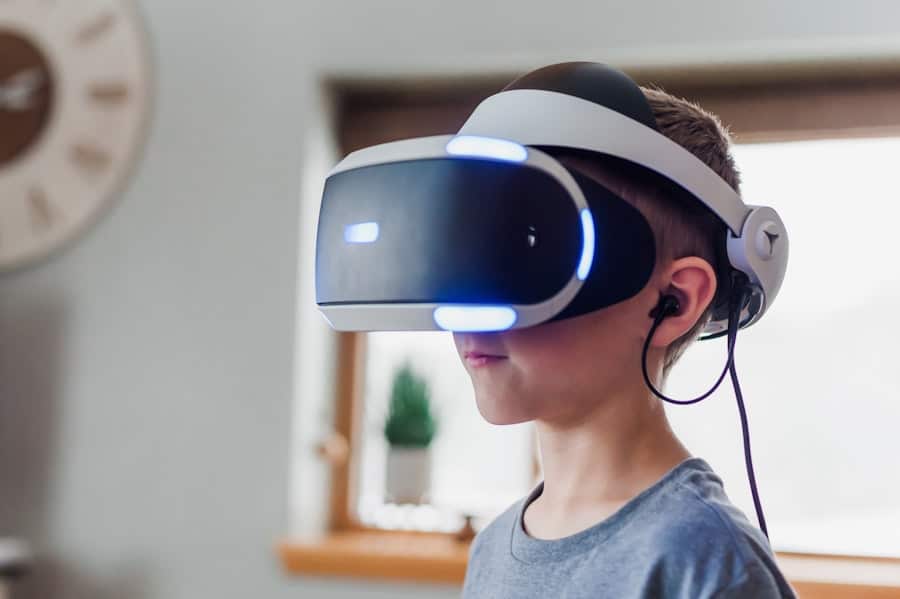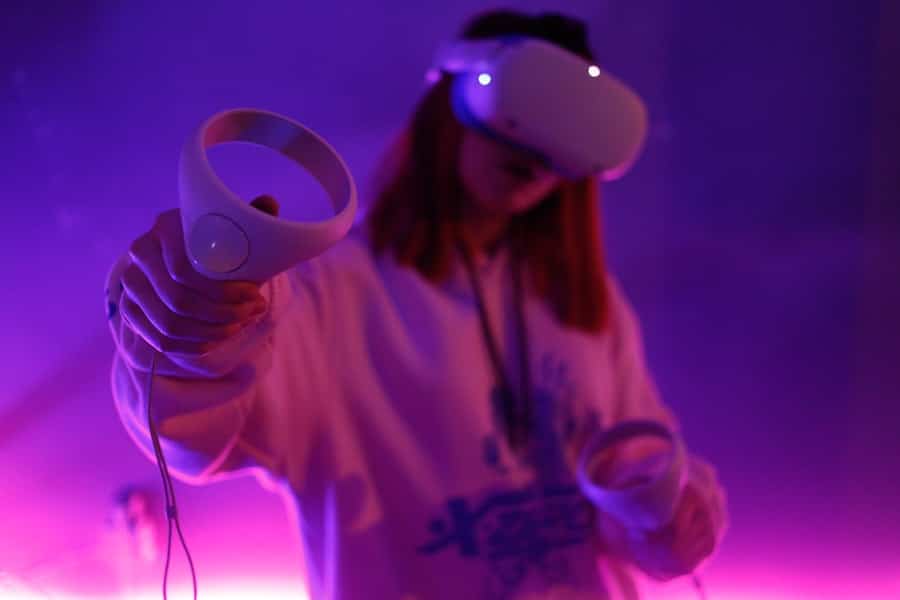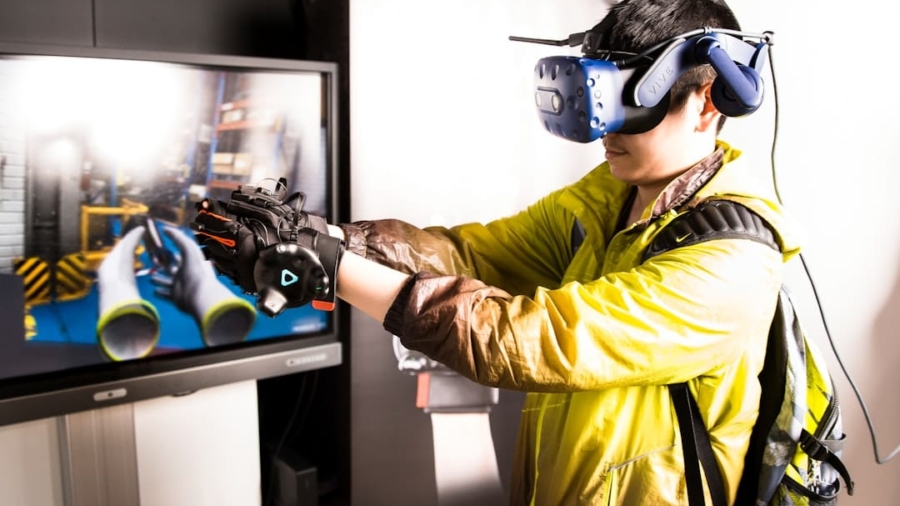The cost barrier is one of the most significant challenges facing the widespread adoption of virtual reality (VR) technology. High-quality VR headsets can range from several hundred to over a thousand dollars, depending on the specifications and features. For instance, premium devices like the Oculus Quest 2 or the Valve Index offer immersive experiences but come with a hefty price tag that may deter potential users.
This financial hurdle is particularly pronounced in lower-income demographics, where spending on entertainment technology is often limited. As a result, many individuals may not have the opportunity to experience VR, which could lead to a lack of familiarity and interest in the technology. Moreover, the cost barrier extends beyond just the initial purchase of the headset.
Users often need to invest in additional hardware, such as powerful gaming PCs or consoles, to run VR applications effectively. This requirement can significantly increase the overall expense, making VR less accessible to a broader audience. The ongoing costs associated with software purchases, subscriptions, and potential upgrades further compound this issue.
Consequently, while VR has the potential to revolutionize various sectors, including education, healthcare, and entertainment, its high entry price remains a formidable obstacle that limits its reach and impact.
Key Takeaways
- Cost barrier: VR technology can be expensive, making it inaccessible to many consumers.
- Limited content: There is a lack of diverse and engaging content available for VR, limiting its appeal.
- Technical barriers: Setting up and maintaining VR equipment can be complex and require technical expertise.
- Motion sickness: Some users experience discomfort and motion sickness when using VR, limiting its usability.
- Lack of accessibility: VR technology may not be accessible to individuals with disabilities, creating a barrier to use.
- Social stigma: There may be a stigma associated with using VR, impacting its social acceptance.
- Comfort and convenience: VR headsets can be bulky and uncomfortable to wear for extended periods, affecting user experience.
- Hardware limitations: The capabilities of VR hardware may be limited, impacting the overall experience for users.
Limited Content
Another critical issue plaguing the VR landscape is the limited content available for users. While there has been a surge in VR applications and games in recent years, the variety and depth of content still lag behind traditional gaming and media platforms. Many users find themselves quickly exhausting the available options, leading to dissatisfaction and disinterest in continuing to engage with VR technology.
For example, while popular titles like “Beat Saber” and “Half-Life: Alyx” have garnered acclaim, they represent only a fraction of the content that is available on more established gaming platforms. The challenge of limited content is further exacerbated by the fact that developing high-quality VR experiences requires significant time and resources. Creating immersive environments that leverage the unique capabilities of VR demands expertise in 3D modeling, programming, and user experience design.
As a result, many developers may hesitate to invest in VR projects due to uncertainty about return on investment. This reluctance can stifle innovation and lead to a stagnation of content offerings, ultimately hindering the growth of the VR ecosystem. Without a diverse array of engaging experiences, users may struggle to find compelling reasons to adopt or continue using VR technology.
Technical Barriers

Technical barriers present another significant challenge for potential VR users. The complexity of setting up and using VR systems can be daunting for those who are not technologically savvy. Many VR headsets require intricate configurations, including sensor placement and software installation, which can be overwhelming for newcomers.
For instance, a user may purchase a headset only to discover that their existing computer does not meet the necessary specifications to run VR applications effectively. Furthermore, technical barriers extend beyond setup challenges; they also encompass issues related to performance and usability.
Users may experience lag or motion sickness if their hardware cannot keep up with the demands of VR applications. This can lead to negative experiences that deter individuals from engaging with VR technology altogether. As developers strive to create more immersive experiences, they must also consider the varying levels of technical proficiency among users.
Simplifying the user experience while maintaining high-quality performance is essential for overcoming these barriers and fostering broader adoption of VR technology.
Motion Sickness
Motion sickness is a well-documented phenomenon that affects many individuals when using virtual reality systems. The disconnect between visual stimuli and physical sensations can lead to discomfort, nausea, and disorientation for some users. This issue arises when there is a mismatch between what users see in the virtual environment and their body’s sense of movement.
For example, if a user is moving quickly through a virtual landscape but remains stationary in reality, their brain may struggle to reconcile these conflicting signals, resulting in motion sickness. The prevalence of motion sickness in VR has been a significant concern for developers aiming to create immersive experiences without causing discomfort. Various strategies have been employed to mitigate this issue, such as reducing motion blur, implementing teleportation mechanics instead of smooth locomotion, or providing users with options to customize their experience based on their comfort levels.
However, despite these efforts, motion sickness remains a barrier for many potential users who may be hesitant to try VR due to fear of experiencing discomfort. Addressing this challenge is crucial for expanding the user base and ensuring that VR technology can be enjoyed by a wider audience.
Lack of Accessibility
Accessibility is a critical consideration in the development and adoption of virtual reality technology. Many existing VR systems are not designed with inclusivity in mind, leaving individuals with disabilities at a disadvantage when it comes to experiencing immersive environments. For instance, users with mobility impairments may struggle with systems that require physical movement or standing for extended periods.
Similarly, individuals with visual impairments may find it challenging to engage with content that relies heavily on visual cues without adequate audio descriptions or alternative interfaces. Efforts are being made within the industry to address these accessibility concerns; however, progress has been slow. Developers must prioritize creating experiences that cater to diverse needs by incorporating features such as customizable controls, adjustable settings for visual and auditory elements, and alternative modes of interaction.
By fostering an inclusive environment where all users can participate in VR experiences, developers can not only expand their audience but also enrich the overall landscape of virtual reality technology.
Social Stigma

Social stigma surrounding virtual reality technology can also hinder its acceptance and adoption among potential users. Many people associate VR with niche gaming communities or view it as an isolating experience that detracts from real-world interactions. This perception can discourage individuals from exploring VR as a legitimate form of entertainment or social engagement.
For example, someone might hesitate to invite friends over for a VR gaming session due to concerns about how it will be perceived or whether it will foster meaningful connections. Moreover, the portrayal of virtual reality in popular media often reinforces negative stereotypes. Movies and television shows frequently depict VR as an escape from reality or as a tool for addiction rather than as a medium for creativity and social interaction.
These narratives can shape public perception and contribute to hesitancy around adopting VR technology. To combat this stigma, advocates must highlight positive use cases for VR—such as collaborative workspaces, educational applications, and social platforms—that demonstrate its potential for enhancing human connection rather than detracting from it.
Comfort and Convenience
Comfort and convenience play pivotal roles in determining whether individuals will embrace virtual reality technology as part of their daily lives. Many current VR headsets are bulky and heavy, which can lead to discomfort during extended use.
This physical discomfort can deter users from engaging with VR for prolonged periods or even discourage them from using it altogether. In addition to physical comfort, convenience factors such as ease of use and portability are essential considerations for potential users. Many people lead busy lives and may not have the time or space required for elaborate VR setups that involve multiple sensors or extensive calibration processes.
Portable solutions like standalone headsets have emerged as a response to this demand; however, they often come with trade-offs in terms of performance or content availability. Striking a balance between comfort and convenience while delivering high-quality experiences is crucial for encouraging broader adoption of VR technology.
Hardware Limitations
Hardware limitations represent another significant barrier to the widespread adoption of virtual reality technology. While advancements have been made in recent years—such as improved graphics capabilities and reduced latency—many users still encounter performance issues due to outdated or insufficient hardware. For instance, individuals using older gaming consoles or computers may find themselves unable to run newer VR titles effectively, leading to frustration and disappointment.
Additionally, hardware limitations can impact the overall quality of the virtual experience itself. Users may encounter issues such as low frame rates or subpar graphics that detract from immersion and enjoyment. As developers continue to push the boundaries of what is possible in virtual reality, they must also consider the varying capabilities of consumer hardware when designing their applications.
Ensuring compatibility across a range of devices while maintaining high-quality performance is essential for fostering an inclusive environment where all users can enjoy the benefits of VR technology without being hindered by hardware constraints.
While the article “Why VR Gaming Lacks Mass Adoption Despite Innovation” delves into the challenges faced by the VR gaming industry, a related piece that explores the broader theme of technology adoption is How Smartwatches Are Enhancing Connectivity. This article examines how smartwatches have successfully integrated into daily life by enhancing connectivity, offering insights into how emerging technologies can overcome barriers to widespread acceptance. By comparing the adoption trajectories of VR gaming and smartwatches, one can gain a deeper understanding of the factors that influence consumer acceptance and the strategies that can be employed to foster greater integration of innovative technologies into everyday routines.
FAQs
What is VR gaming?
VR gaming refers to the use of virtual reality technology to create a simulated environment for gaming. Players can interact with this environment using special VR headsets and controllers, which track their movements and immerse them in the game world.
What are some reasons for the lack of mass adoption of VR gaming?
There are several reasons for the lack of mass adoption of VR gaming, including high costs of VR equipment, limited content and game options, technical barriers, and the need for powerful hardware to run VR games.
How do high costs of VR equipment affect mass adoption?
The high costs of VR equipment, such as VR headsets and controllers, make it difficult for many consumers to afford and invest in VR gaming. Additionally, the need for powerful hardware to run VR games adds to the overall cost of adopting VR gaming.
What role does limited content and game options play in the lack of mass adoption of VR gaming?
Limited content and game options in the VR gaming market make it challenging for consumers to find a wide variety of games that appeal to their interests. This lack of diverse content can deter potential users from investing in VR gaming.
How do technical barriers impact the mass adoption of VR gaming?
Technical barriers, such as the complexity of setting up VR equipment and the potential for motion sickness during gameplay, can deter consumers from embracing VR gaming. These barriers create a learning curve and potential discomfort for users.
Why does the need for powerful hardware to run VR games affect mass adoption?
The need for powerful hardware, such as high-performance computers or gaming consoles, to run VR games adds to the overall cost of adopting VR gaming. This requirement may be a barrier for consumers who do not already own compatible hardware.
What are some potential solutions to increase mass adoption of VR gaming?
Potential solutions to increase mass adoption of VR gaming include reducing the cost of VR equipment, expanding the library of VR games and content, improving the accessibility and ease of use of VR technology, and addressing technical challenges to enhance the overall user experience.

